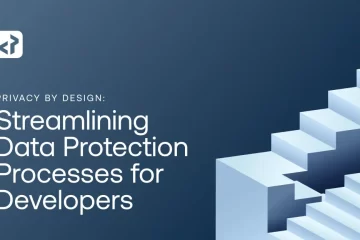Hey there, let’s talk about the Brazil LGPD!
Have you heard about the Brazilian General Data Protection Law (Lei Geral de Proteção de Dados, or Brazil LGPD)? It’s a game-changer for data privacy in Brazil, shaping how organizations handle data and interact with consumers. Since its inception in 2020, the LGPD has been adapting to local and global data privacy trends. In this article, we’ll dive into the evolution of the law and share practical tips to ensure your organization stays compliant and protected from risks.
Discover the Journey of the Brazil LGPD
The LGPD was officially introduced in August 2018 and went into effect on 18 September 2020. Taking inspiration from the EU’s GDPR, this law reflects Brazil’s commitment to data privacy and protection. It applies to any organization processing data in Brazil, collecting data within the country, or catering to Brazilian consumers.
Organizations must adhere to key principles like transparency, security, and purpose limitation under the LGPD. Non-compliance can lead to penalties of up to 2% of revenue in Brazil, capped at R$50 million per violation, enforced by the Autoridade Nacional de Proteção de Dados (ANPD).
Evolution of the Brazil LGPD: What’s New?
Since its enforcement, the LGPD has undergone significant updates:
- ANPD Establishment: The creation of the ANPD, Brazil’s data protection authority, marked a crucial milestone in enforcing LGPD compliance and providing guidance.
- Penalties and Sanctions: The ANPD began enforcing fines in 2021, with a clear framework for sanctions now in place, including fines, warnings, and database suspension.
- Data Subject Rights: Brazilian citizens are exercising their rights under the LGPD, emphasizing the need for organizations to handle data subject requests promptly.
- International Data Transfers: Guidelines on cross-border data transfers have been issued to ensure data protection measures for global data sharing.
- Sector-Specific Regulations: Clarifications for sectors like finance and healthcare have been issued to tailor compliance measures.
Steps to Ensure LGPD Compliance
To navigate the complexities of the Brazil LGPD, consider the following essential measures:
1. Conduct Data Mapping:
Identify and categorize the personal data you collect to understand compliance gaps and mitigate risks.
2. Establish DSAR Process:
Set up efficient processes to address data subject requests promptly.
3. Appoint a DPO:
Assign a Data Protection Officer to oversee compliance matters and liaise with the ANPD.
4. Create a Data Privacy Policy:
Outline how personal data is collected, used, and shared to foster transparency.
5. Embed Privacy by Design:
Integrate privacy considerations into business processes from the start.
6. Implement DPIAs:
Conduct Data Protection Impact Assessments for high-risk data processing activities.
7. Develop an Incident Response Plan:
Prepare to detect, respond to, and report data breaches efficiently.
8. Ensure Third-Party Compliance:
Ensure third-party vendors adhere to LGPD requirements for data processing.
9. Stay Updated:
Keep abreast of ANPD guidelines and regulatory changes to adjust your compliance strategies.
Embrace Sustainable LGPD Compliance
Compliance with the Brazil LGPD is an ongoing journey. By proactively addressing data privacy, organizations can build trust with consumers and stand out in Brazil’s digital market. If you need support with LGPD compliance, Formiti offers tailored services to navigate Brazil’s data privacy landscape confidently.
Formiti’s expertise in LGPD compliance ensures security and peace of mind in today’s data-driven world. Reach out to us for a streamlined compliance strategy!



